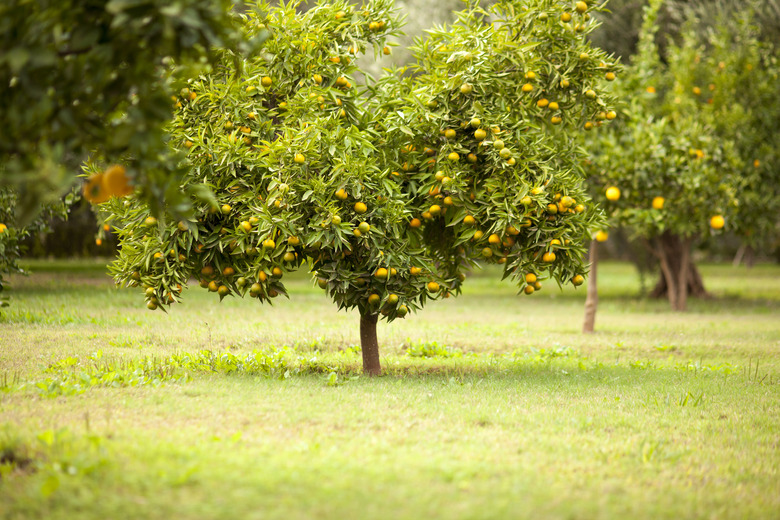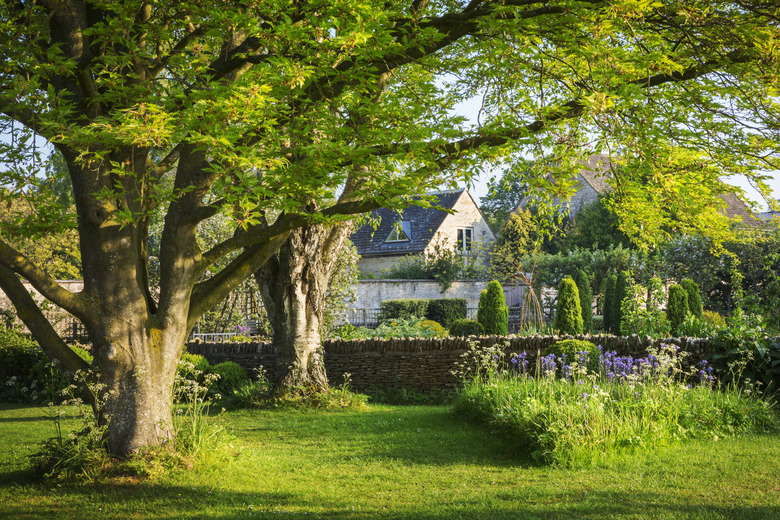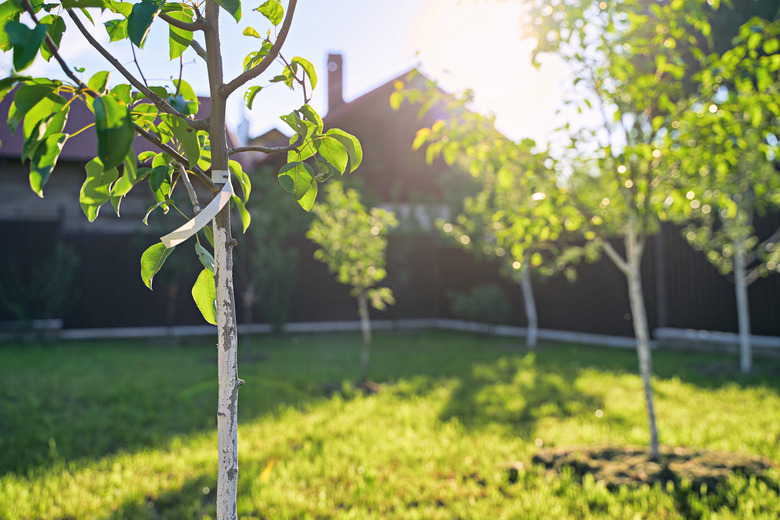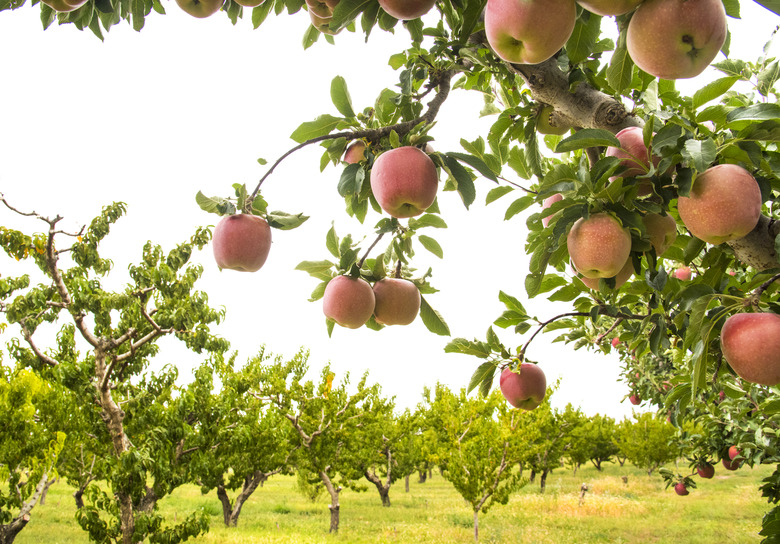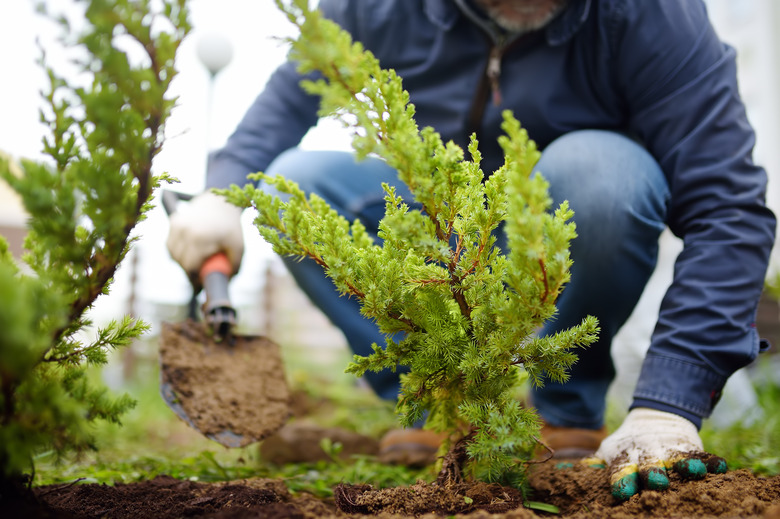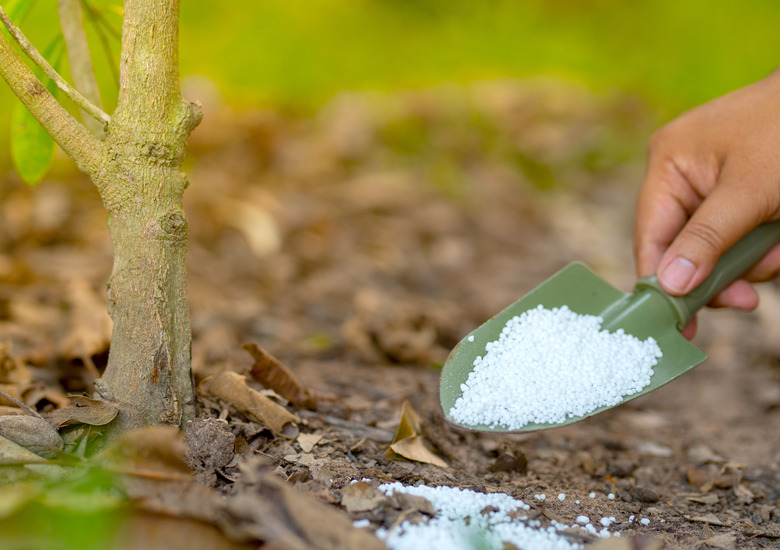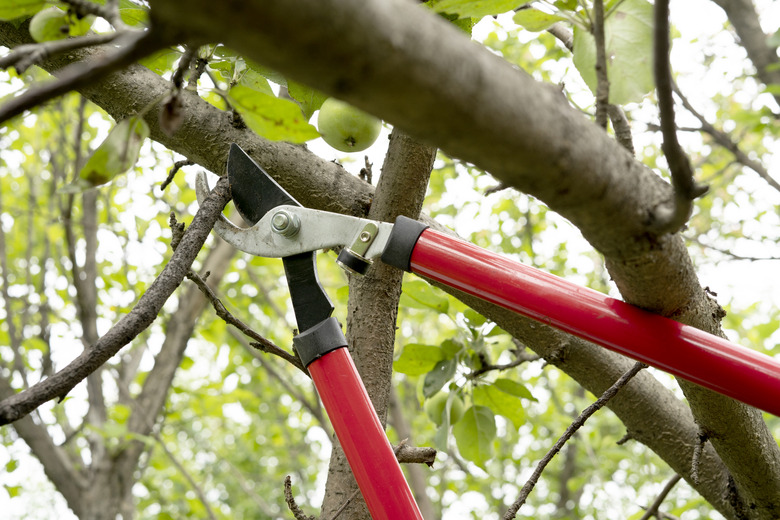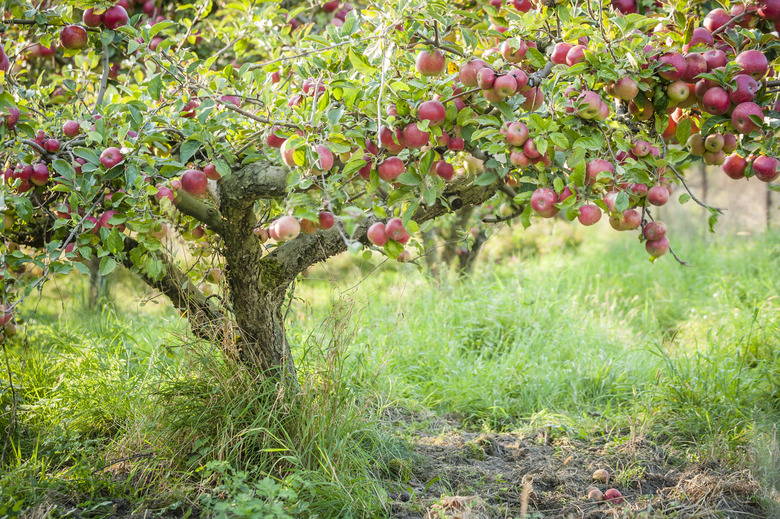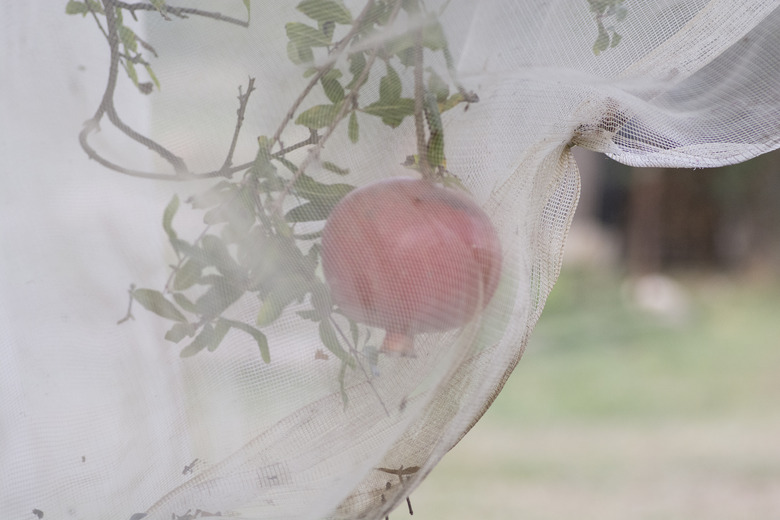8 Expert Tips For Planting Fruit Trees
We may receive a commission on purchases made from links.
Planting fruit trees may be the most productive type of gardening. You get to enjoy the literal fruit of your labor for years — even decades — to come, and many fruit trees also provide attractive foliage and stunning fall colors for your landscaping. Planting fruit trees does require an act of faith because most won't produce a crop for two to six years after planting.
In terms of effort versus reward, planting fruit trees leans toward the reward side of the equation — especially with the satisfaction of eating your own food that you grew. Some can be temperamental during the first year of growth, but once established, most fruit trees require little maintenance.
1. Pick the right tree.
1. Pick the right tree.
No matter what type of fruit you choose to grow, there are many varieties available. For example, over 2,500 different varieties of apples (Malus spp.) are grown in the United States, and about 100 are grown commercially.
Planting fruit trees begins by matching a variety with the climate in your area. You can talk with someone at a local garden center or consult with the local office of the United States Department of Agriculture (USDA) Cooperative Extension Service to pinpoint a variety that does well in your area. Some online retailers can help you find suitable plants by entering your zip code into their database to find your USDA plant hardiness zone as well as a list of fruit trees for your area.
Fruit trees require pollination in order to produce fruit. Some types, such as peaches and nectarines (both in the Prunus genus), are mostly self-fruitful, which means they can pollinate themselves. Others are self-sterile, and they require cross-pollination — pollen from another cultivar of the same variety — to produce fruit. Cross-pollination requires at least two trees that are compatible with one another planted no more than 50 feet apart. Plant retailers and online sources can help you choose suitable pollinators.
2. Select the right location.
2. Select the right location.
When it comes to choosing a location for planting fruit trees, you will need to consider the amount of sunlight the area receives and the quality of the soil. Most fruit trees require full sun for about six to eight hours per day, although there are some varieties that are more shade tolerant.
Most prefer fertile, well-draining soil. You can determine the soil fertility and how to improve the soil by having it tested. Some garden centers can perform the tests, or you can send soil samples to the local office of the cooperative extension service. Contact the office to find out what they will need from you.
Some fruit trees can grow as high as 20 feet or more, so you will need to consider the location of overhead power lines. Before digging, call 811 to alert local utilities to come out to your property and mark the approximate location of buried utilities.
If you are planting multiple trees, space dwarf varieties 6 to 8 feet apart. Semidwarf should be spaced about 15 feet apart and full-size trees about 25 feet apart. Fruit trees are very efficient at drawing nutrients and moisture from the soil. Ornamental plants and vegetables planted nearby will compete with the trees for the available resources.
3. Plant at the right time.
3. Plant at the right time.
Many fruit trees can be started from seeds, but it is a long process that often leads to failure because the resulting seedlings may not bear fruit that looks and/or tastes like the fruit that bore the seeds. And after many years, the seedlings may not bear fruit at all. Most fruit trees start as bare-root stock or as young potted plants.
For planting fruit trees from bare-root stock, consult a garden center or a local nursery for the best time of year to plant. The goal is to plant the trees at a time that gives the roots a chance to become established. In warm climates, that is often in the late fall or early spring. Those in cold climates usually wait until early spring and plant as soon as the soil can be worked.
Plant bare-root stock as soon as you get it. If you are delayed a few days, pack the roots in moist soil before planting. If you miss your planting time but want to get the trees into the ground, look for young potted plants. They usually cost more, but the root system is already somewhat established.
4. Plant fruit trees properly.
4. Plant fruit trees properly.
It is helpful to become familiar with the overall theory and the basic techniques of planting trees before working on your fruit trees. Dig a hole that is about 36 inches square and only as deep as the rootball. The square shape encourages the roots to move out into the surrounding soil. Amend the removed soil with compost before backfilling the hole and work it into the soil using a garden fork.
Bare-root trees are often grafted, which means the tree you are buying is attached to the roots of another tree. A slight bump near the bottom of the trunk is where the two trees were joined. This union area should be planted a few inches above the soil. Make sure by placing a straightedge across the hole while holding the tree in place. Adjust the depth of the hole as necessary. Fruit trees often require staking. Drive a wooden stake a few inches from the center of the hole.
Place the roots in the hole and spread them out carefully. Have a helper begin adding the soil back into the hole. After a few inches, shake the tree slightly to help distribute the soil around the roots. Fill the hole, tamping the soil gently. Water thoroughly and apply a few inches of organic mulch around the tree. Keep the mulch away from the trunk of the tree. Loosely tie the trunk of the tree to the stake.
5. Baby the new tree.
5. Baby the new tree.
About three or four weeks after planting, remove the mulch and apply a balanced fertilizer in a circle 18 inches from the trunk, according to label directions for the rate of application instead of randomly broadcasting an unmeasured amount. Water the area and replace the mulch. After the first year, fertilize in the spring according to soil test recommendations.
During the first growing season, remove blossoms to prevent any fruit from forming. This channels the tree's energy into developing roots and into the overall health of the tree rather than producing fruit. It may sound counterintuitive, but for most varieties, removing the blossoms in the first year will increase fruit production in later years.
Newly planted trees are under a lot of stress, and if they don't get enough moisture, they will die. Plan on watering deeply at least once a week and more often during very dry weather. Soaker hoses and drip irrigation systems will get the water directly to the roots. There are also tree-watering bags that slowly release water to the tree's roots over a number of hours.
6. Prune your fruit tree.
6. Prune your fruit tree.
Most fruit trees benefit from regular pruning. Trees that are not pruned bear less fruit than those that are maintained on a regular basis. Pruning usually takes place when the tree is dormant, generally winter into early spring depending on your location. Get local advice on timing because severe pruning at the wrong time can weaken the tree.
Pruning helps shape the tree. In most cases, the goal is to open the center of the tree to allow sunlight and air circulation. There are different types of pruning and pruning cuts that differ from fruit variety to variety. Pruning requirements change as the tree ages, so consult a garden center for specific requirements.
Although pruning usually takes place when the tree is dormant, it is sometimes necessary to prune in the summer. This happens if the tree is damaged by weather or pests. Cut away the damaged sections with sharp pruners.
7. Thin the fruit.
7. Thin the fruit.
Thinning the fruit crop soon after the fruit appears — usually when the fruit is about 1 inch or so in diameter — will improve the quality of the overall yield. It also prevents fruit from dropping from the tree before its time, and it keeps heavy fruit, such as peaches and nectarines, from putting damaging pressure on the branches. Thinning also helps prevent biennial bearing, where the tree produces fruit one year but produces a smaller crop or no crop at all the next year.
To thin, simply pick or cut away some of the fruit, leaving about 6 to 8 inches between the fruit that remains. For fruit that grows in clusters, such as apples, remove all but one healthy-looking specimen from each cluster.
Not all fruit needs to be thinned. For example, pears (Pyrus spp.) and cherries (Prunus spp.) are generally not thinned, but if the tree drops unripe fruit, consider thinning as a possible solution. Before thinning a fruit that usually does not require thinning, consult an expert because the process and spacing recommendations will be different.
8. Protect your trees.
8. Protect your trees.
As with any plant, fruit trees are susceptible to disease and insect problems. The dangers and the remedies are for the most part specific to the type of fruit, so seek advice from the cooperative extension office for dealing with problems as they arise. Many problems can be avoided by following good maintenance procedures, such as pruning to allow air circulation and cleaning up debris around the base of the tree.
Fruit may attract poachers, such as birds and squirrels. You can protect many fruits from birds by covering the fruit with garden netting when possible. The netting will slow squirrels, but they will eventually chew through it if they are hungry enough. Many gardeners cover most of their trees with netting but leave one uncovered for the squirrels. There are a variety of varmint controls to protect trees from squirrels, raccoons and other pests. Scare tactics can include visual deterrents and loud noises.
